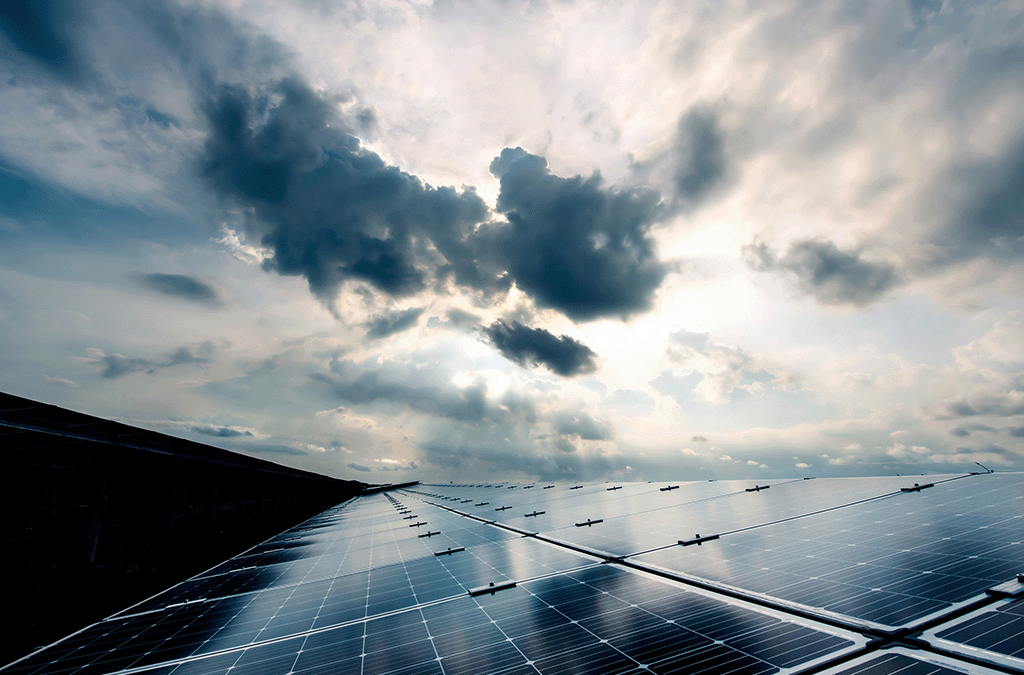So, does solar power work on cloudy days? The short answer to this is yes, solar panels still generate solar power on cloudy days. This is because as long as the sun is over the horizon, it is, to some degree, generating solar radiation, and solar radiation is what powers solar panels.
Cloudy Days and Solar Power Production
Alright, so you’ve made the big decision to invest in a solar energy system for your home. With any big decisions come lots of questions. One of the main questions we get from clients is “will my solar panels still generate power on cloudy days?”
Like we said above, yes, your solar panels will still generate solar power on cloudy days. While a bright, sunny day will allow your solar panels to generate the most power and electricity, the sun is still giving off ultraviolet radiation on cloudy days, just not as much.
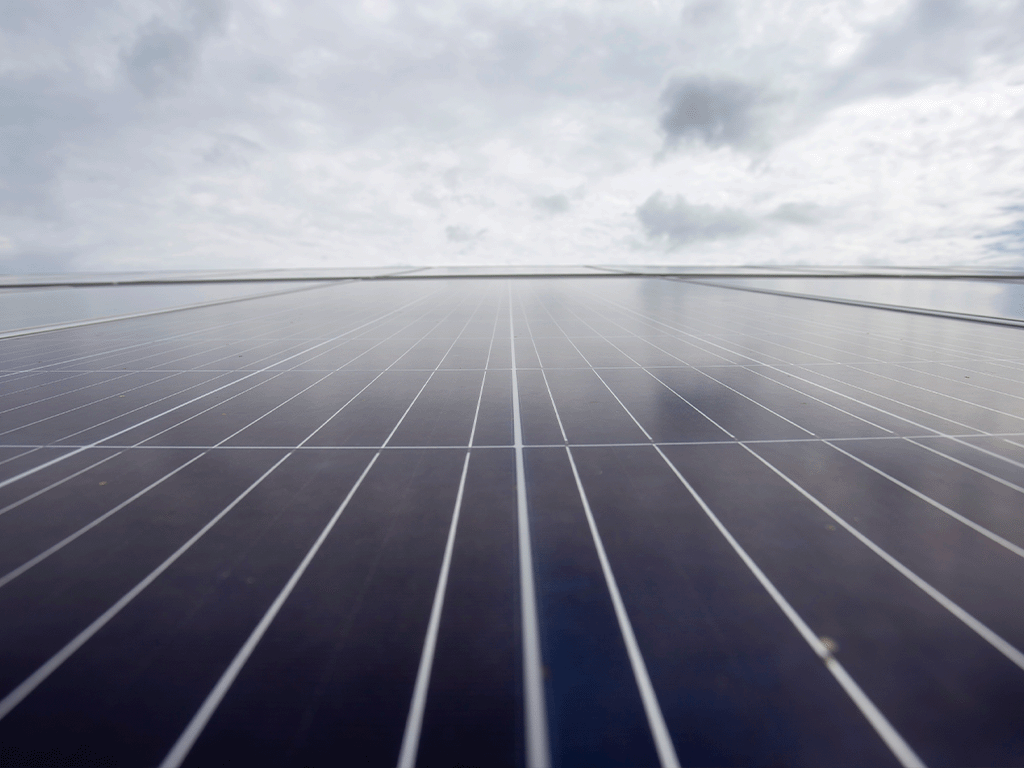
How Cloud Cover Affects Electricity Generation
The amount of electricity and power generated by your solar panels on a cloudy day will depend heavily on the density, or thickness, of the cloud cover. A thin layer of clouds will still allow a decent amount of ultraviolet rays to hit your solar panels. But a much thicker cloud cover will block more of the rays.
As a general rule, on cloudy days, you can expect your solar panels to produce about 10-25% of their normal power output. This is because their efficiency is decreased when they’re not exposed to full sun. So while they work, they just aren’t working as well.
Solar Power and Rainy Days
Similarly to a cloudy day, a rainy day won’t cause your solar panels to all of a sudden quit generating and putting out electricity and power. An interesting fact about rain and solar panels is that the rain cleans all the grime and dust off of them, so in the long run, a good rain storm is actually great for your solar energy production.
Solar panels are a low maintenance form of energy and power, but, like any household appliance, they’ll need some work to keep running at maximum efficiency and capacity. So you can think about the rain as your assistant; it basically cuts down on your work and helps ensure your solar panels last longer.
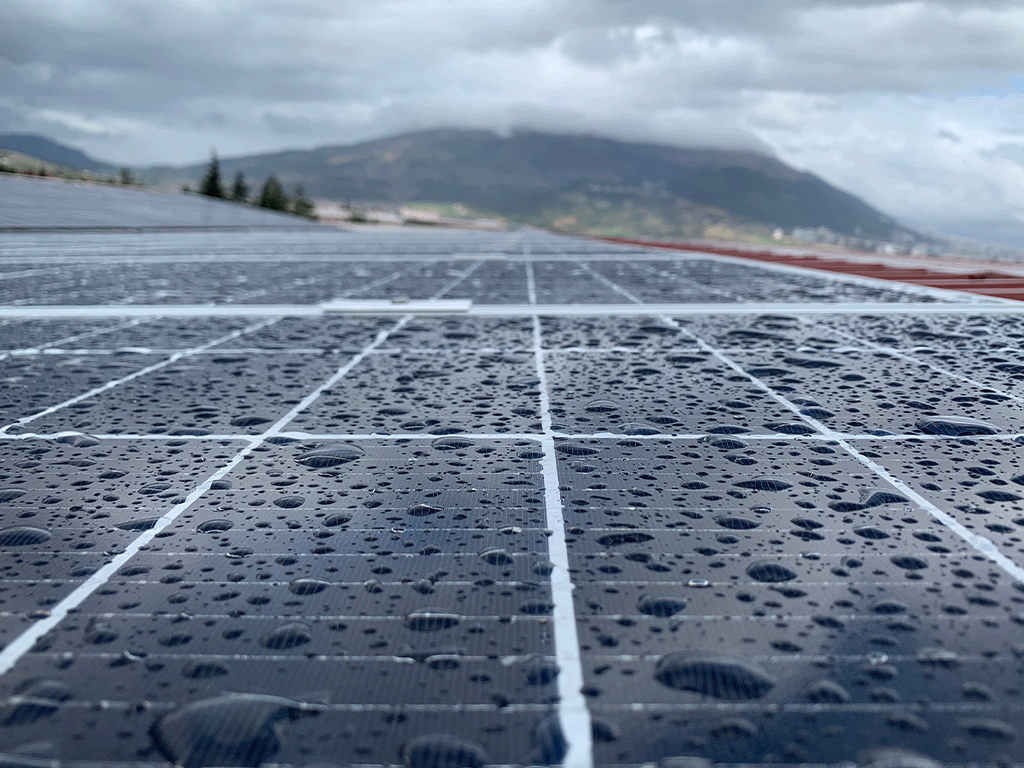
Solar Power and Snowy Days
The solar power produced by your solar panels on snowy days is essentially the same as it would be on rainy days or cloudy days. The solar panels are still producing power and electricity, just not as efficiently as on sunny days.
The only issue you could run into with your solar panels and snowy weather is if the snow is so heavy and/or thick that it ends up sticking on your solar panels. That would block out a lot of the light, and the power production would probably drop dramatically.
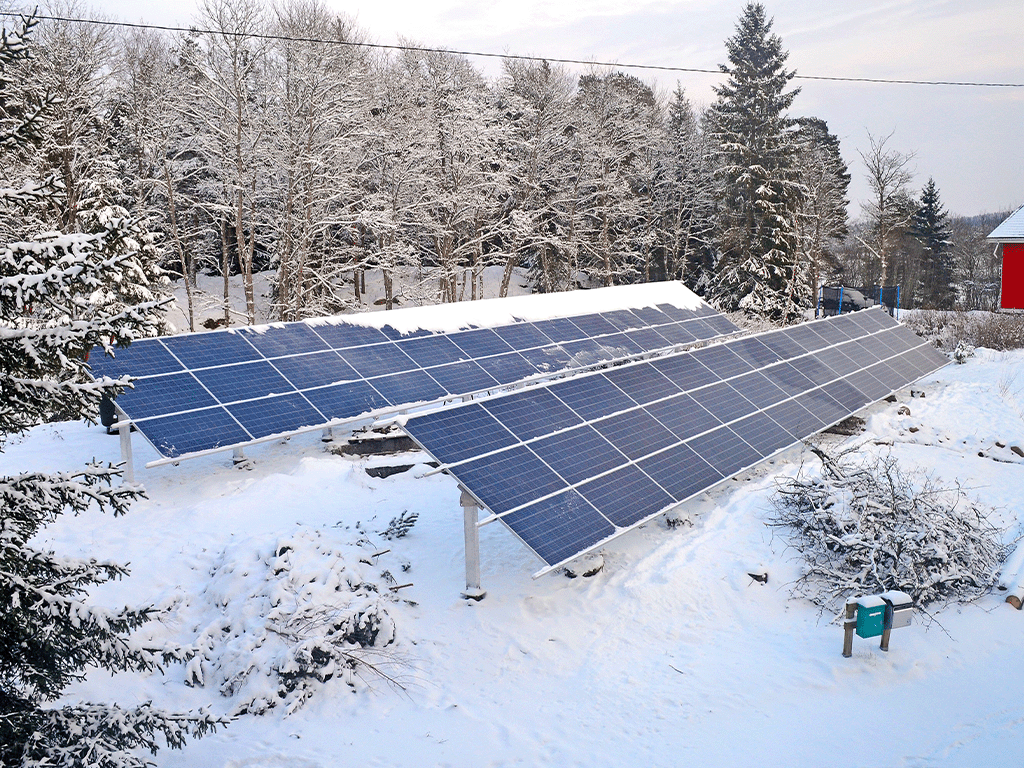
Solar Panels Aren’t Just For Sunny Climates
A follow-up question our customers ask after wondering if solar panels still generate power on cloudy days, is “what climate is best for solar panels? Isn’t it best to be in a sunny climate?” Our answer usually surprises people.
Typically, when you think of solar power and solar panels, you think of ultra-sunny places, like Los Angeles, anywhere in Texas, etc. However, some of the cities that have the highest number of solar installations are New York City, San Francisco, Seattle, Boston, and Milwaukee.
Those places aren’t known for their year-round, sunny weather. They’re more often than not experiencing inclement weather like rain, heavy clouds, fog, snow, etc. So why would they boast such high numbers of solar energy systems?
Solar Offsets High Energy Costs
The cities we mentioned above, in addition to having a lot of inclement weather, also have high costs for electricity, energy, and other utilities. People will need to be running their heater, hot water heaters, lights, etc. This uses a lot of energy and costs a lot of money.
Though the purchase and installation of a solar energy system in your home isn’t cheap, it’s one of those expenses that will pay for itself and then make you money back.
As we said, although solar panels do produce the most power on sunny days, a cloudy climate shouldn’t deter you from going solar. Your panels will still be collecting ultraviolet rays during daylight hours, and thus producing power and electricity. And the best news? You’ll be saving on your monthly bills!
A Fun Fact About Germany and Solar Energy Production
We’ve talked about how solar panels don’t need constant sun in order to generate electricity. And we mentioned some major U.S. cities that are leaders in solar energy installations and production.
Germany is actually one of the world’s leaders in renewable energy production. They produce around 25% of the world’s solar energy, and they have 200 or more cloudy, rainy, snowy, foggy days.
Their quick growth happened in less than ten years, and proves that going solar is truly not dependent on 300 days of sun. It also shows undeniably that solar power is not only good for your bank account, but is an invaluable investment in helping the planet.
So What About Solar Power Production at Night
No, your solar panels will not produce any electricity or power at night. This is because the sun has set, and therefore no direct solar radiation is reaching your solar panels.
However, simply because your solar panels aren’t producing electricity at night, doesn’t mean that you’ll suddenly be living in the dark and using candles to get around.
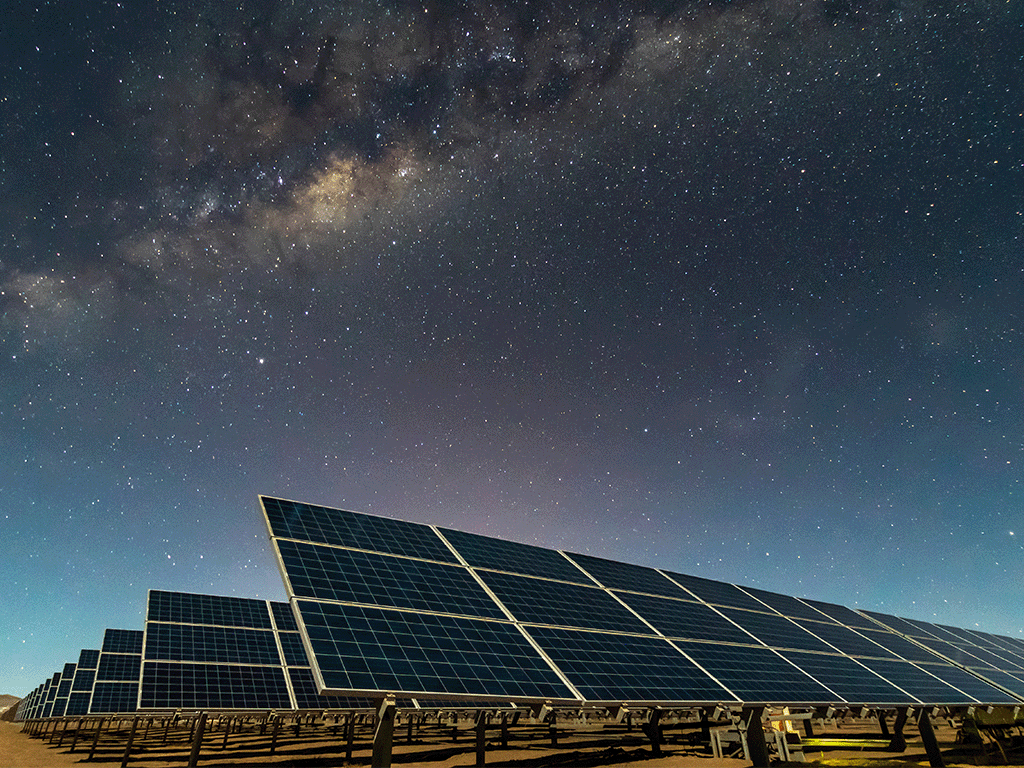
Solar Power and Temperature
This is too interesting not to mention, and we feel that it goes along perfectly with the questions about solar power and various weather conditions.
A common assumption from customers is that solar panels require consistently hot, sunny weather in order to function at their highest efficiency. This isn’t quite the case though…
The Ideal Temperature/Condition for Solar Power Production
Here’s where our customers are always surprised. Solar panels actually work the best and generate the most solar power in cold climates. Yes, that’s right.
Solar panels love cold, sunny climates. So long as the temperature is at or below 77 degrees Fahrenheit, you’ll see the greatest solar power production. If you’ve got a net-metering program in your area, this is also where you’ll very likely see the greatest benefits.
When the temperature climbs over 77 degrees, your solar panels will absolutely still work, but just not quite as efficiently. The way we often explain this to our customer is by relating it to how our own bodies function in various temperatures. We often struggle if the weather is too hot, and end up working harder to stay cool than to be able to do whatever outdoor project we were trying.
But What if I Live in a Really Hot Climate?
Even if you live in an extremely hot climate like Phoenix, you can absolutely still benefit from having a solar energy system installed at your house. Phoenix is actually the #6 city in the country for solar energy systems.
It’s a case where offsetting the huge expense for monthly utility bills far outweighs any potential downsides of your solar panels maybe not functioning as efficiently.
Solar energy and solar power are really about offsetting enormous utility costs and benefitting our planet. So go ahead and get those solar panels installed, regardless of where you live!
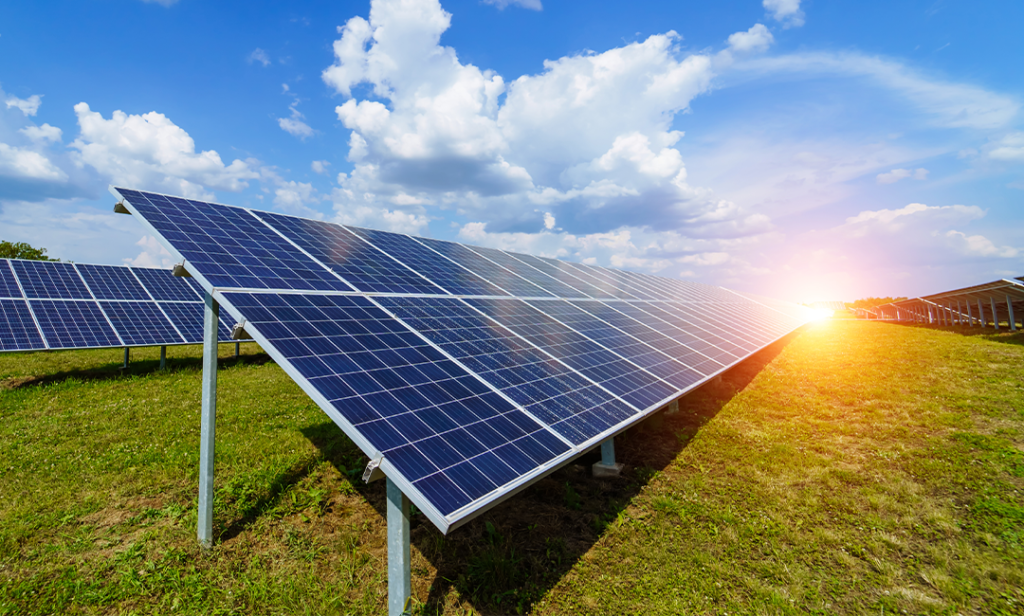
The Science Behind Solar Power Production
We’ve talked a lot about behind how different weather conditions and temperatures affect solar power production. Now you’ve got a basic understanding of these things, as well as the key takeaway being: solar power is 500% worth it; we wanted to get down to some basic science behind solar panels and how they generate electricity.
Solar Photovoltaic Panels
Solar PV panels are the most commonly used type of panels in solar energy systems. These PV panels take in ultraviolet radiation from the sun and convert it into a current called a direct current (or DC).
The next step in the process is for the panels to convert the DC into an AC, or alternating current. AC energy is the type of power used in your house.
The Step-by-Step Breakdown of this Process
- Sunlight hits the PV panels and the photons are converted to electrons.
- The electrons pass through the solar cells and are then converted to DC electricity.
- The inverter takes the electricity and converts it into AC, or alternating current, energy.
- Now your home is ready to use the AC energy produced by your solar panels.
Storing/Using Surplus Solar Energy
There are a couple of ways you can store excess solar power/energy that you’ll then be able to use during cloudy conditions, at night, etc. These are a backup solar battery system and something called a net-metering program.
Backup Solar Batteries
When you have a full solar energy system installed in your home or business, you’ll very likely have a backup solar battery storage system.
During peak sunlight hours, your solar panels are collecting solar energy and generating that energy into electricity. There’s often a surplus of energy/power, so this is where your backup batteries come into play.
The batteries store the excess energy produced by your solar panels. This ensures that you’ll have easily accessible power during nighttime hours or times when the panels themselves aren’t generating as much electricity.
The Downside of Backup Batteries
There really aren’t many downsides of having a backup solar battery system. However, since we strongly believe in customer education at Convert Solar, we want to give you all the details, both good and bad.
A backup battery system is going to be an additional cost on top of your solar energy system and installation. Batteries can corrode over time, so you’ll likely have to replace them occasionally. They also take up a bit more space so you’ll want to keep that in mind during your installation.
Another thing to keep in mind when you’ve decided to add backup batteries is that you’ll likely need more than one. The number of backup batteries you’ll need is going to be entirely dependent on how many rooms/areas you’ll want to have accessible power in during non-peak sunlight hours.
Net-Metering Program
Though net-metering isn’t a concrete item you can purchase and have installed alongside your solar energy system, it’s a way in which you can make use of stored up/excess solar power.
Your solar panels are constantly collecting solar energy during daylight hours. Often what happens is that you’ll end up with an excess amount of power or electricity. So where does all the extra go?
You’ve already got a backup battery system installed and it’s doing its job collecting surplus energy. If you’re completely solar powered and not grid-tied, your backup batteries do all the storing up of solar energy.
Going completely off-grid, though, isn’t something that’s attainable or realistic for everyone. So what you’ll see in most solar energy systems, is that they’re what’s called “grid-tied”. This means that your solar system is producing a lot of the energy you’ll use for electricity and power, but that you’re not completely off grid.
So What Exactly Does Net-Metering Do For You?
Any excess power your solar system produces will be sent to the municipal electric grid. What this does is send all that extra power to somewhere/someone else who needs it. And the biggest benefit to you? You get a credit and can either get money back or money will be deducted from your next month’s utility bill.
One of the biggest benefits of net-metering programs is that those credits can be used to offset any additional expenses you might see as a result of cloudy, rainy, snowy, or generally inclement weather. You can see how this would come in handy during the winter or if you live in a place that isn’t sunny all the time.
Another, similar, benefit of using your credits from a net-metering program is that you won’t feel stressed if you’re not able to power your place solely by solar energy.
The Downsides of Net-Metering Programs
Like we’ve already said, at Convert Solar, we believe in customer education. We also believe that knowledge is power, and the more knowledge you have, the better off you’ll be.
So we need to add in some of the downsides we’ve seen as a result of net-metering programs.
There will be months where you might not break even on your utility/electric bill. Even with the credits from previous months, you might still owe a little money. But in the grand scheme of things, the money you might owe won’t be too significant, especially compared to the overall savings you’ll be seeing from having a solar energy system installed at your house.
Another issue that customers can run into with net-metering is that some cities/regions actually don’t offer this program. That’s where customer research comes in, so that way you won’t be surprised if your utility company tells you that they don’t offer such a program.
The Solar Panels Best Suited to Cloudy Conditions
We’ve covered a lot of information in this article, so let’s get back to the main question of solar power and cloudy days.
Solar panels do indeed produce power on cloudy days, however, some solar panels are superior to others in this department. This is where we encourage our customers to do their research and find a highly knowledgeable and experienced solar installer.
The more knowledgeable your installer is, the more likely they will be to find the perfects solar panels for your home and region’s weather conditions. Still not sure exactly how solar panels work, and want to learn more? Read our article How Do Solar Panels Actually Work to find out.
High Efficiency Solar Panels
There are many different types of solar panels out there, but high efficiency solar panels produce many times more energy than regular solar panels. This is important especially if you live in a region that sees a lot of cloudy days and generally inclement weather.
It’s Actually All About the Solar Cells
Ok, so high efficiency solar panels are the panels you’ve chosen to go with for your particular home and environment. But what is it about those high efficiency panels that make them so much better?
The solar cells contained in each solar panel are highly specialized, and actually perform differently depending upon what type of cell they are.
One of the key differences in the solar cells in these higher performing panels is that they’re designed and built to be able to better capture a broader range of ultraviolet rays. By being able to capture more types of UV radiation, these solar cells are then able to store more energy and generate more power for your solar system.
Aluminum Backing
An example of specialized solar cells is one that has a layer of aluminum at the back. What the aluminum does is make a kind of mirror that takes the sunlight coming into the cell and then reflects it back.
The photons (of light) don’t always get absorbed initially. This would be an example of one of the differences between a specialized solar cell and a non-specialized cell. When your solar panels have aluminum-backed solar cells, they essentially bounce the photons back a second time.
This second pass gives the cells a much higher likelihood of absorbing a lot more energy from the sun. So with the ability to absorb more energy, the cells can then give off more electrons. It’s this process that eventually creates a far bigger energy and power output.
Going Solar is a Big Decision.
The upfront cost of buying and installing a solar energy system for your home is substantial, however, the potential long term benefits are even bigger. Before embarking on any major home improvement project and investing hard earned money into it, you’ll most likely have lots of questions.
We’re here to answer them in as much detail as possible. Convert Solar is Virginia Beach’s leading solar energy system experts and installers, and we believe client education is as important as the actual solar panels.
Let us help you find the best solar panels for your house and weather conditions. Virginia Beach certainly has its share of cloudy, rainy, foggy days, but don’t let that deter you from going solar! We’re here for you and will answer any and all questions you’ve got, so call us today to set up your consult and solar energy system installation!
